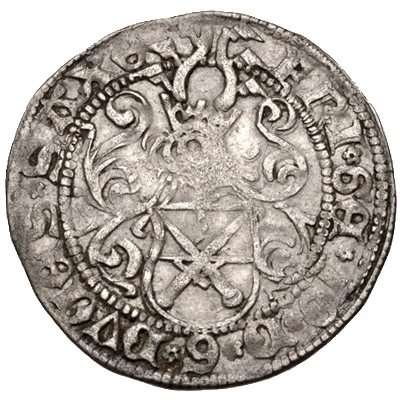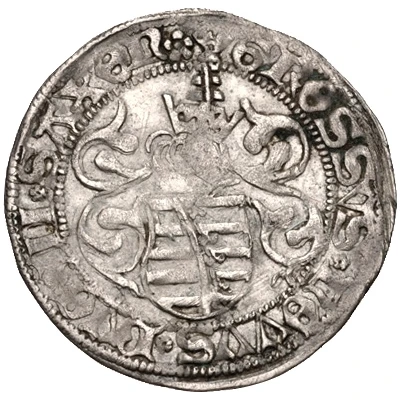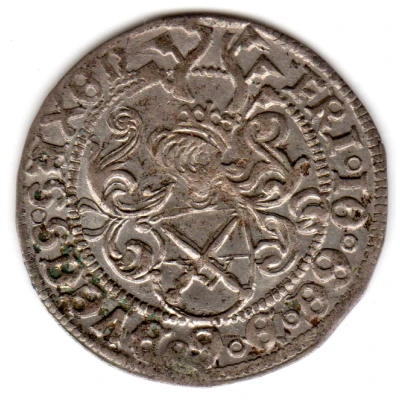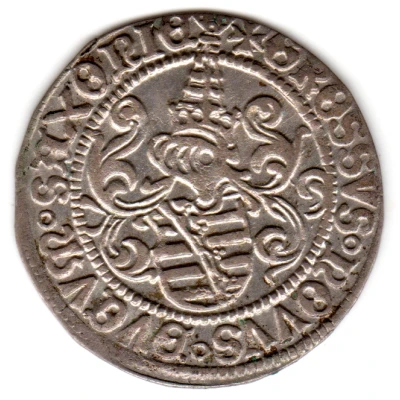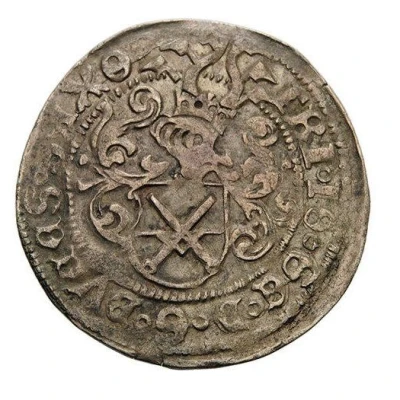
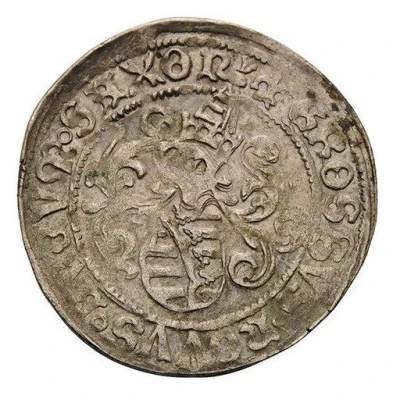

© Leipziger Münzhandlung und Auktion Manfred Höhn
Zinsgroschen - Frederick III, John and George ND
| Billon (.482 silver) | 2.66 g | 25 mm |
| Issuer | Electorate of Saxony (Ernestinian Line) (German States) |
|---|---|
| Prince elector | Frederick III the Wise (Friedrich III) (1486-1525) |
| Duke | John I the Steadfast (1486-1525) George the Bearded (1500-1539) |
| Type | Standard circulation coin |
| Years | 1500-1525 |
| Value | 1 Groschen = 1⁄24 Thaler |
| Currency | Thaler (1485-1573) |
| Composition | Billon (.482 silver) |
| Weight | 2.66 g |
| Diameter | 25 mm |
| Shape | Round |
| Technique | Hammered |
| Orientation | Medal alignment ↑↑ |
| Demonetized | Yes |
| Updated | 2024-10-05 |
| Numista | N#352937 |
|---|---|
| Rarity index | 95% |
Reverse
Shield of arms of ducal Saxony with helmet above
Mint symbol and inscription around
Script: Latin
Lettering: ⚜ GROSSVS · NOVVS · DVCVM · SAXONIE
Translation:
Lilly flower GROSSVS · NOVVS · DVCVM · SAXONIAE
(new Groschen of dukes of Saxony)
Edge
Plain
Comment
Single Lis (lilly) and Double Lis varieties existImage courtesy of Leipziger Münzhandlung und Auktion Manfred Höhn
Varieties exists with obverse legend: FRI * GE * IO (George is listed ahead of John)
Interesting fact
One interesting fact about this coin is that it was minted during a time of great economic and political change in the region. The Ernestinian Line of the Electorate of Saxony was a powerful and influential dynasty that ruled over a large portion of Germany during the 15th and 16th centuries. The Zinsgroschen coin was introduced during the reign of Frederick III, John and George, and it was used as a standard circulation coin throughout the region. The fact that it was made of Billon, a silver-copper alloy, and weighed 2.66 grams, suggests that it was a coin of significant value and importance during its time.
